Abstract
The natural disappearance of malaria from certain areas—a phenomenon which has for many years been observed in various parts of the world—is discussed in relation to the recent deliberate elimination of the disease from large tracts of land. The process of elimination, the detection of residual foci, and the ways in which the disease may be reintroduced into a country are outlined briefly, and the course of events in epidemics which arise from small origins is described in detail. The factors affecting the basic reproduction rate in such epidemics—mean duration of infectivity of a primary malaria case, density of mosquitos in relation to man, and longevity and degree of anthropophilism of the vector concerned—are analysed, and a simplified method of expressing this rate mathematically is given in an annex.
Full text
PDF

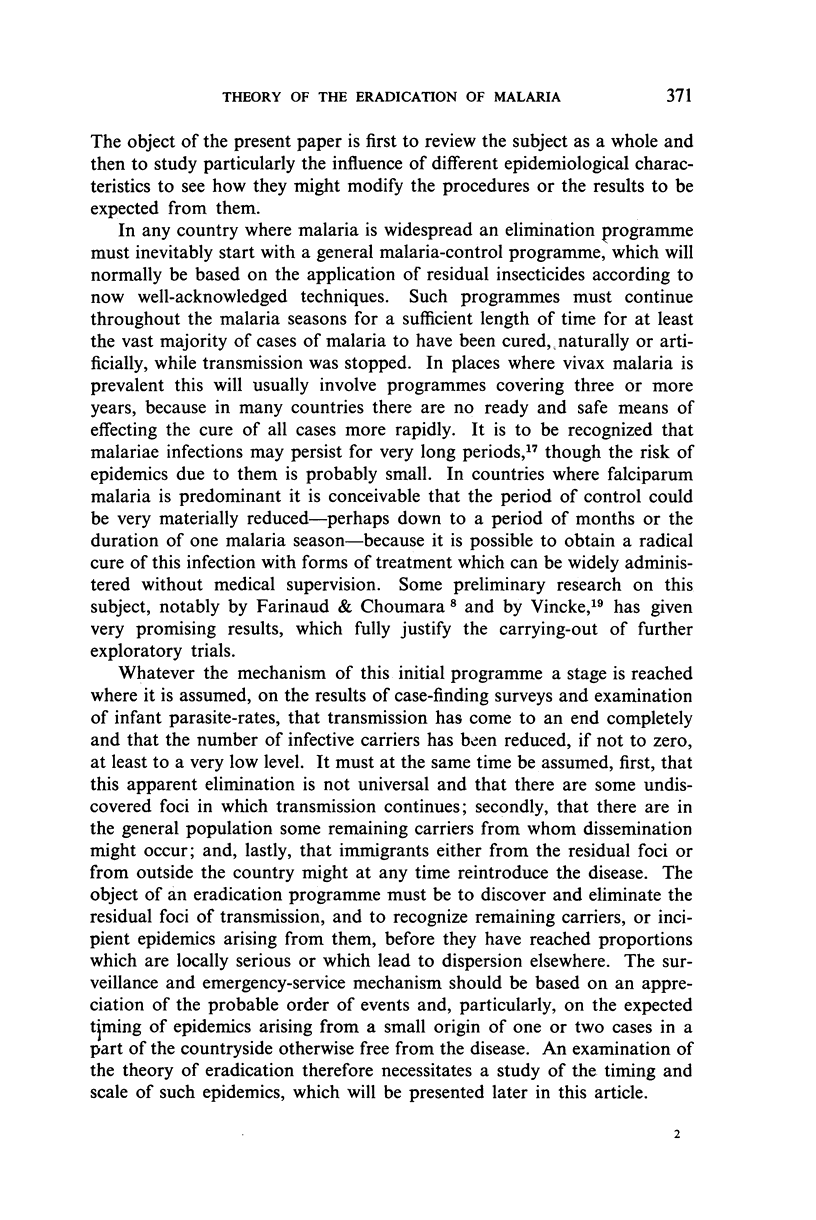
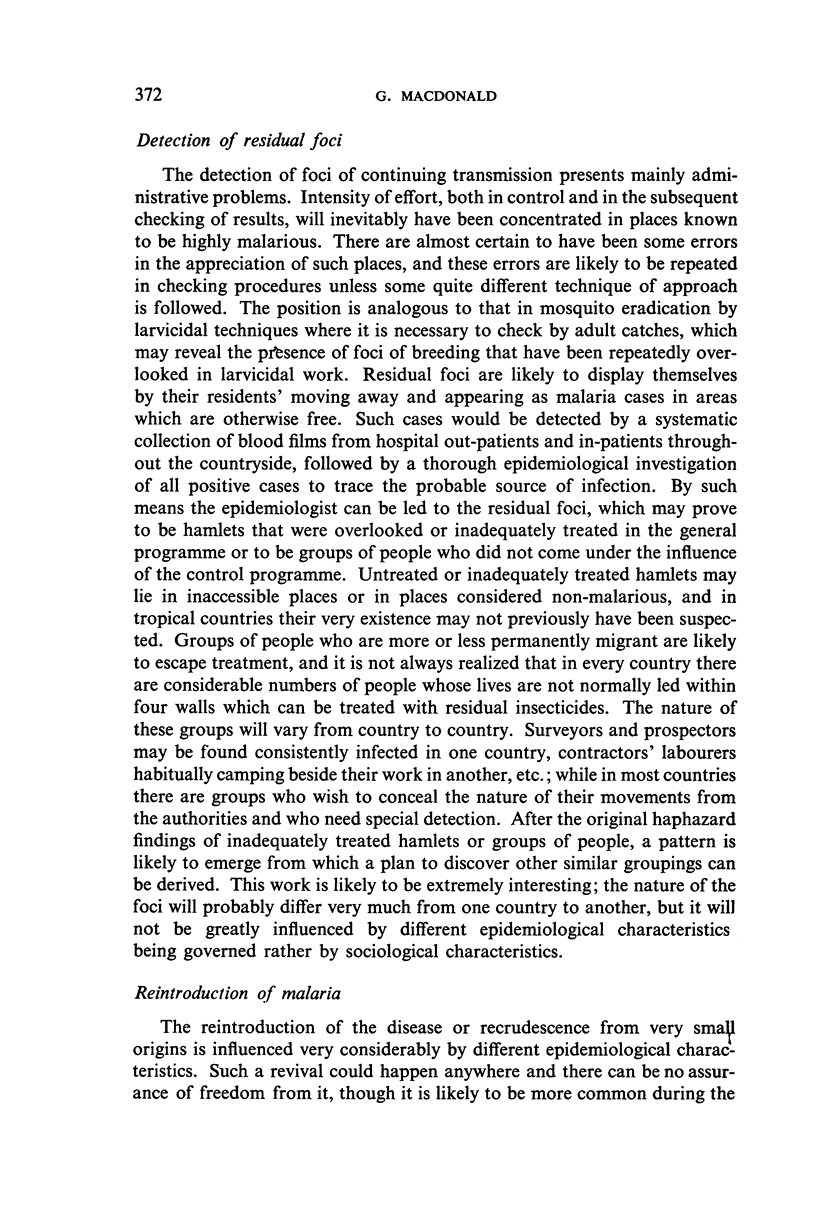
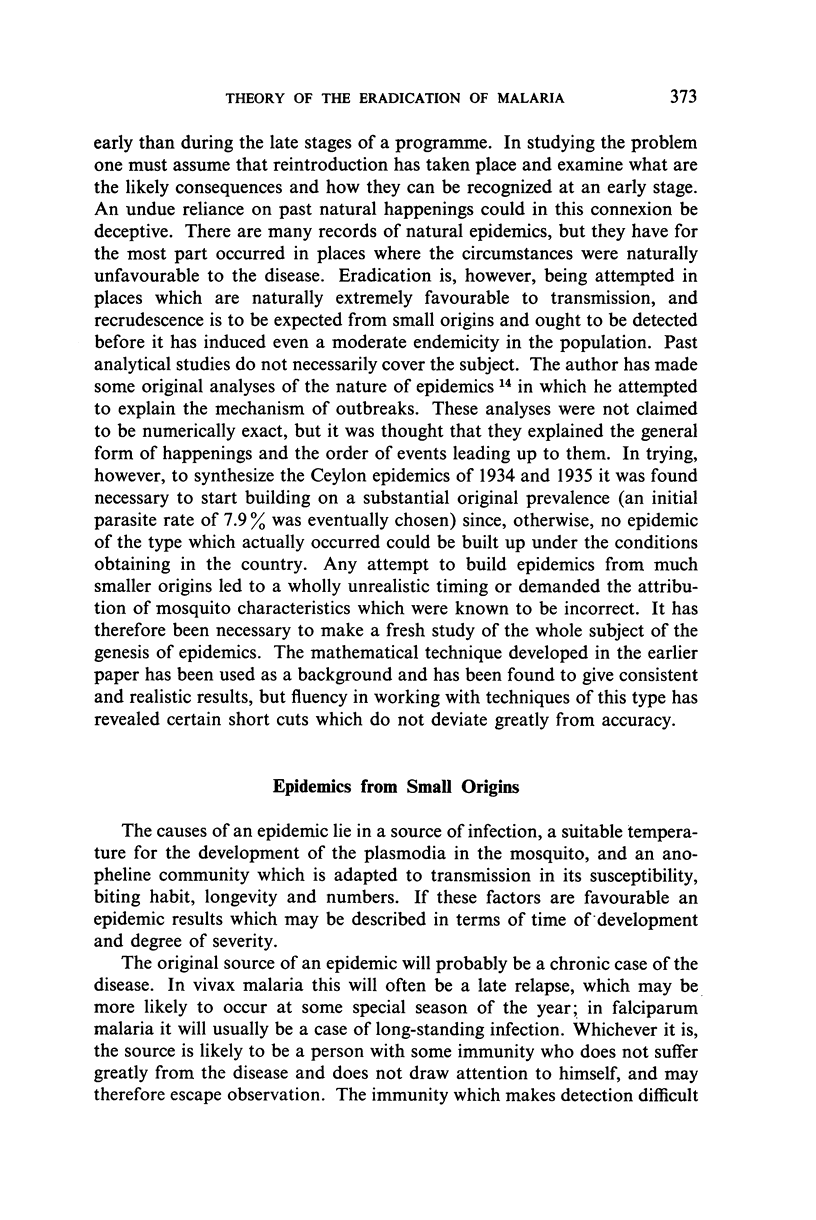


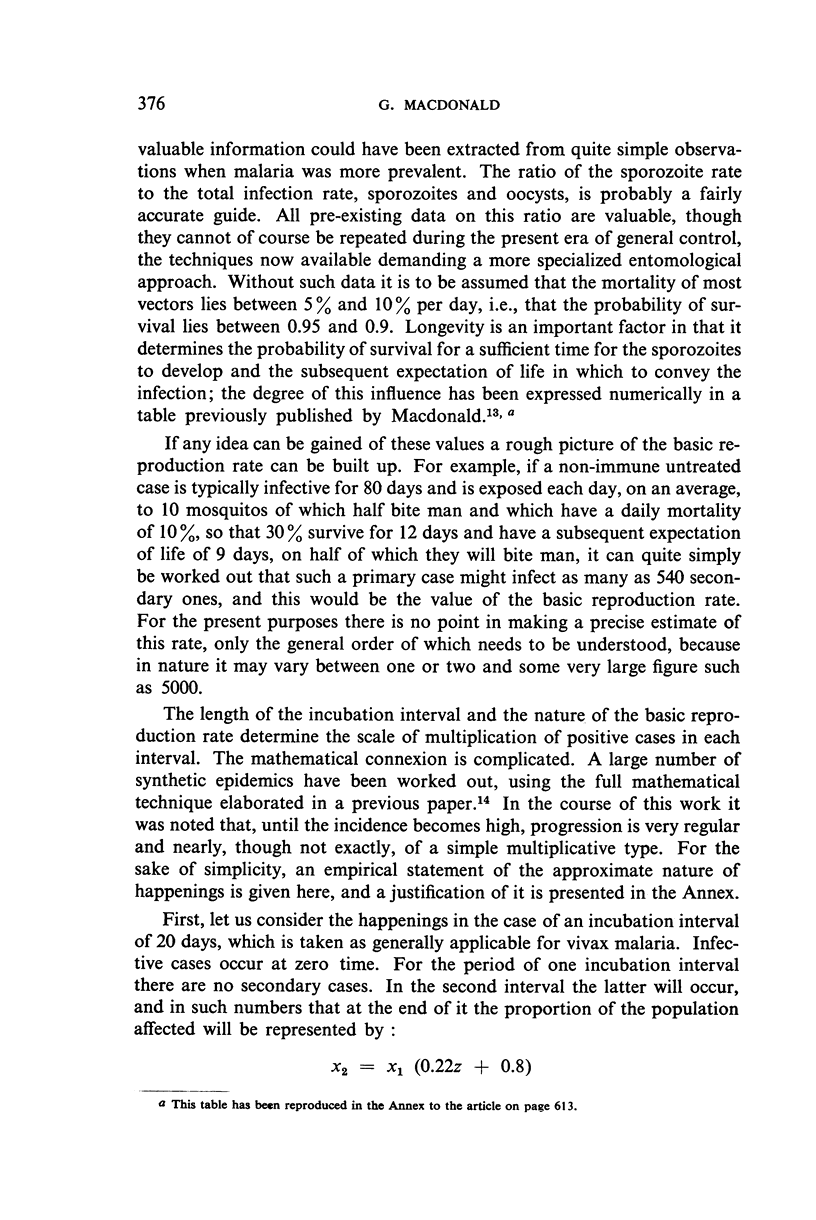
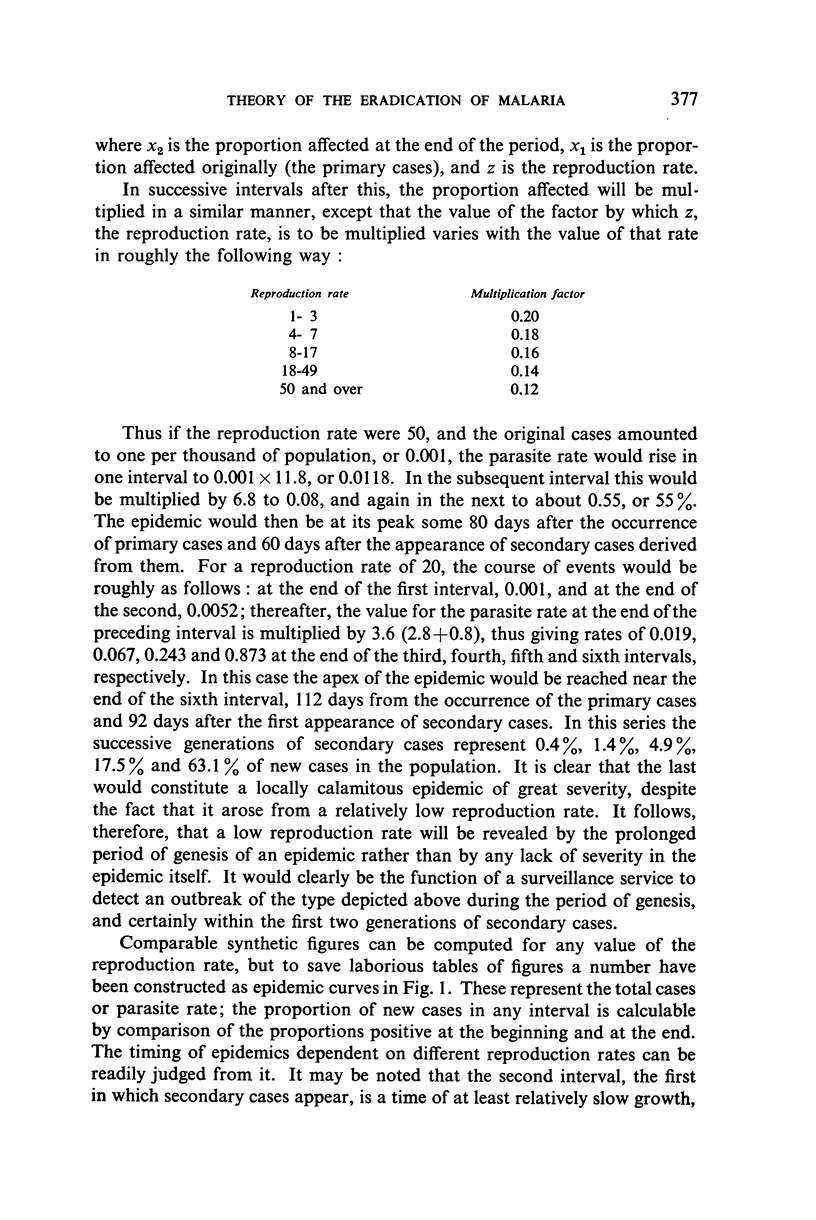
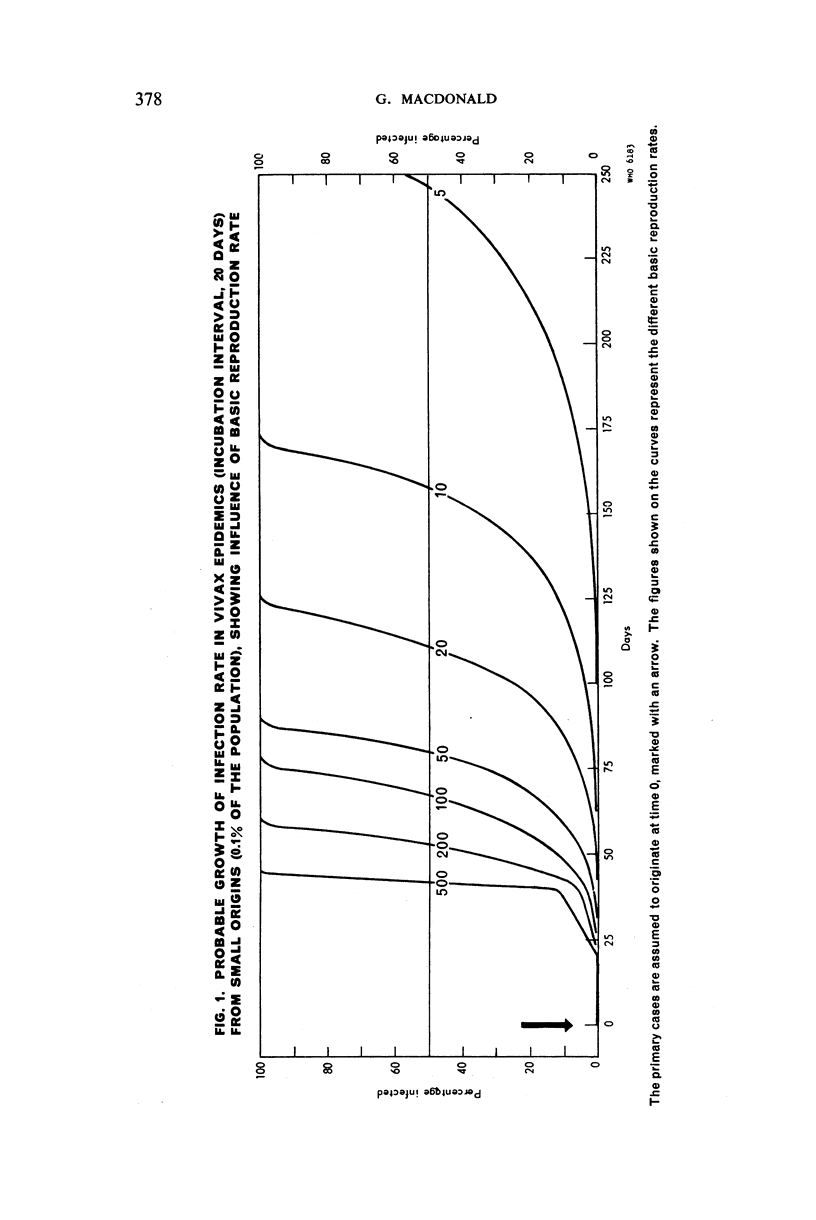
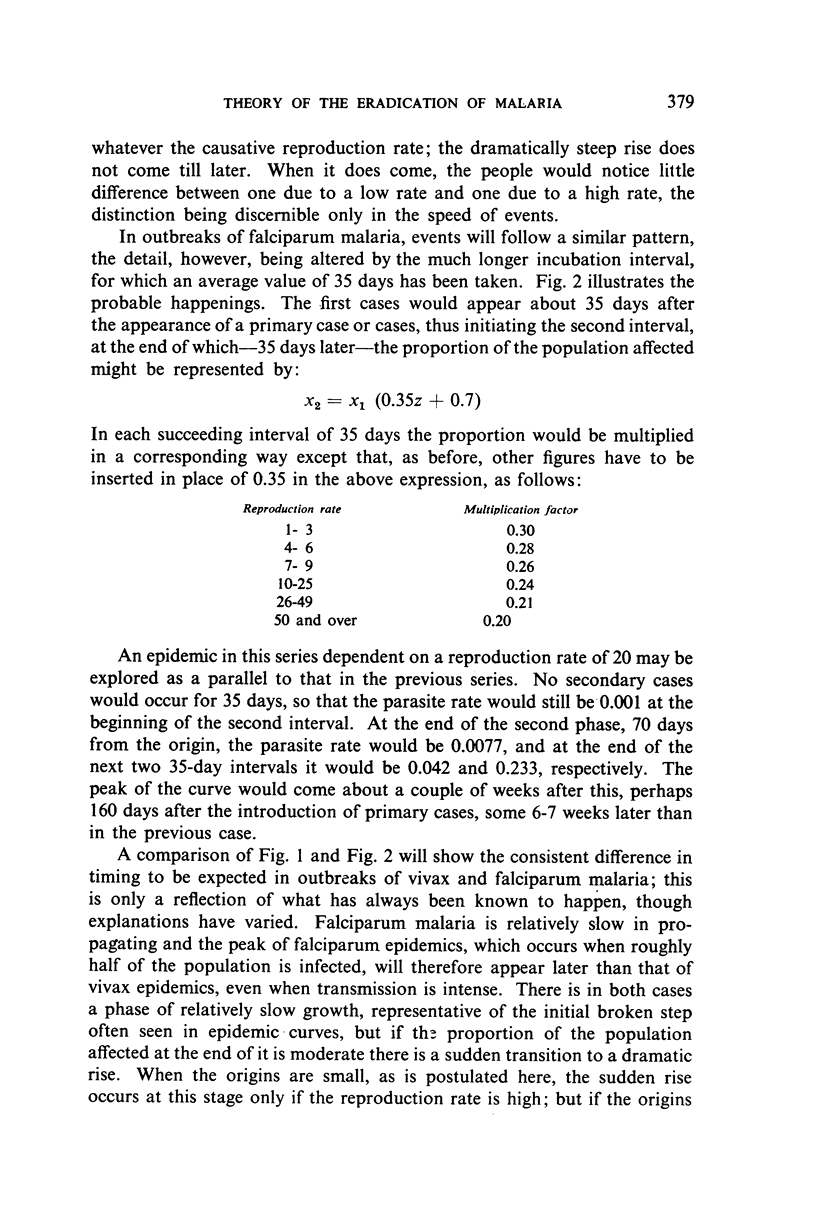
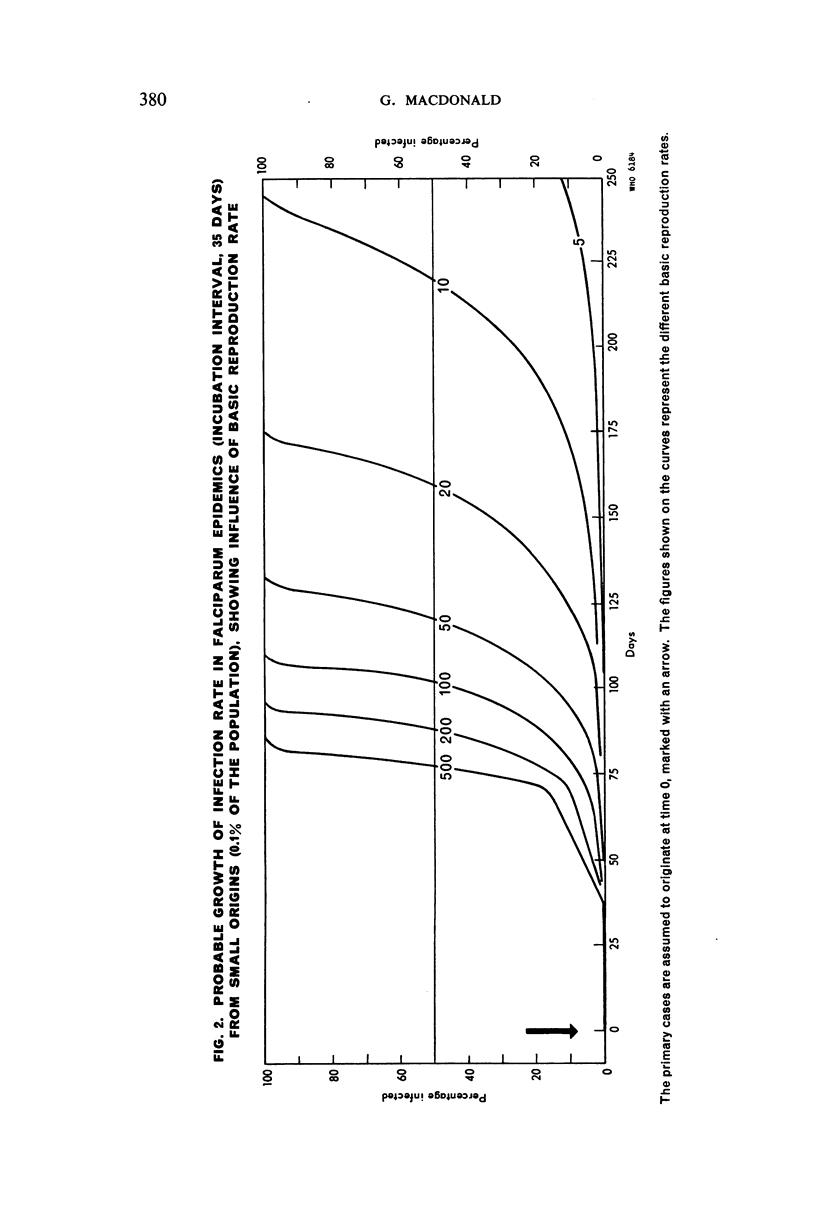
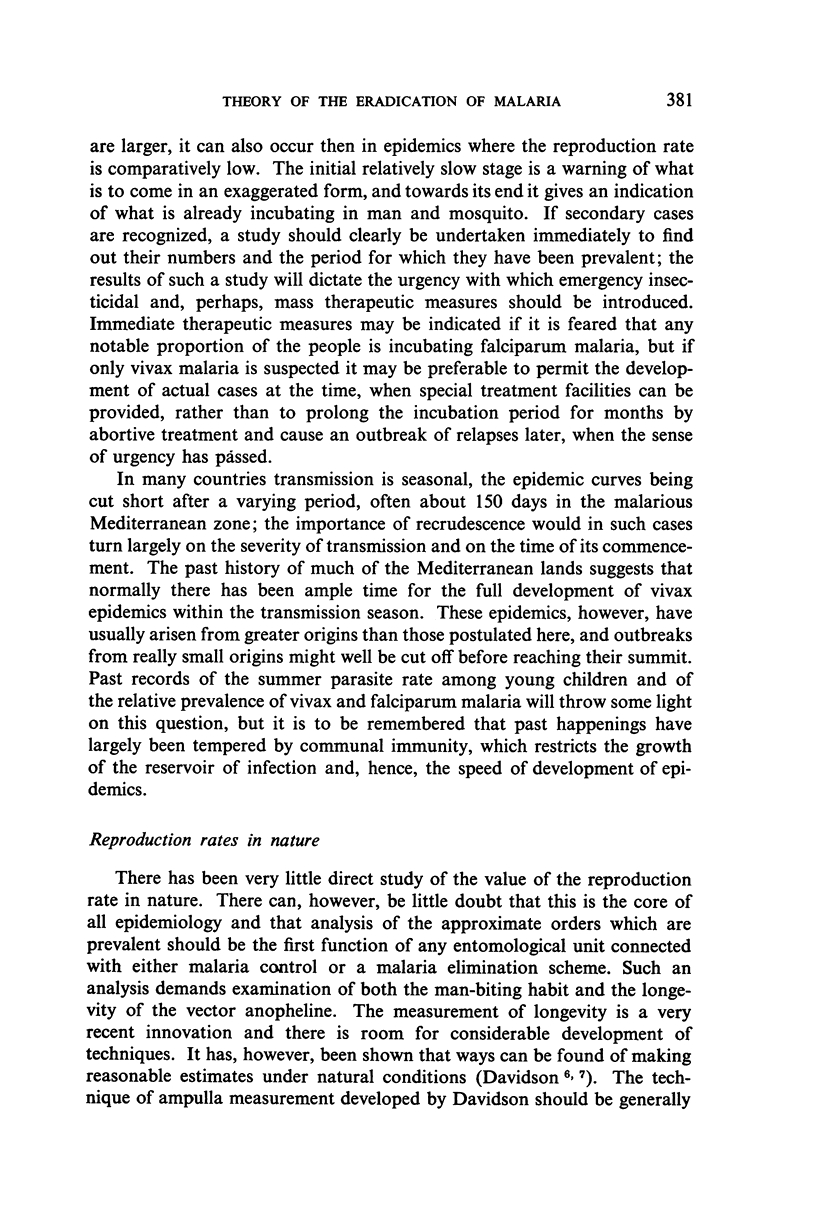
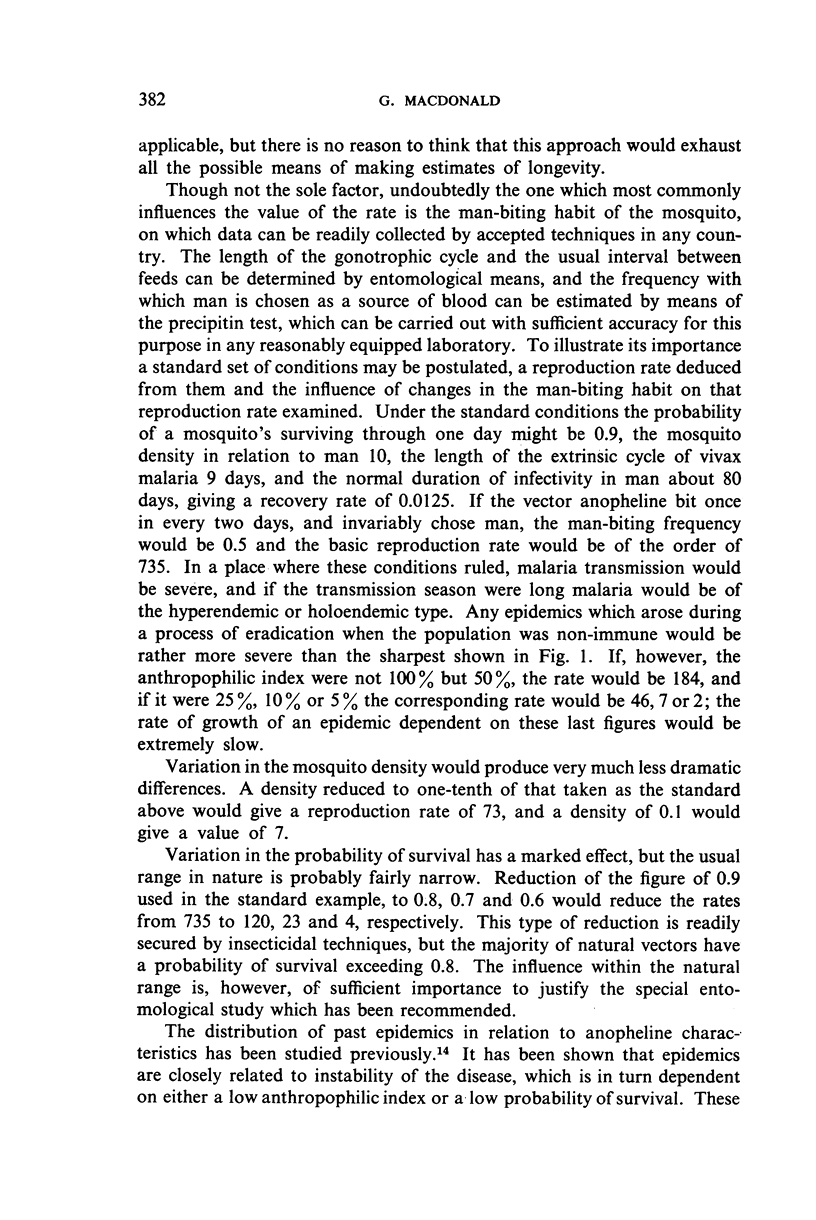
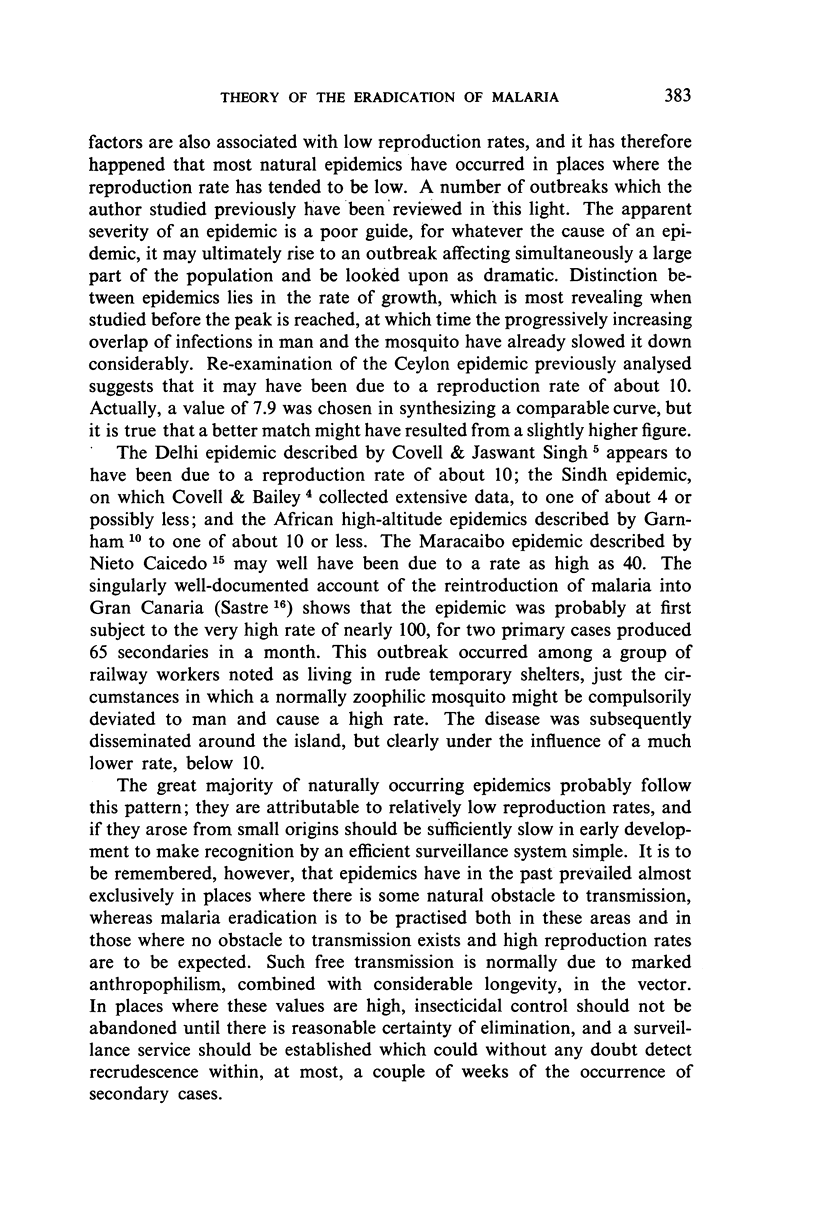
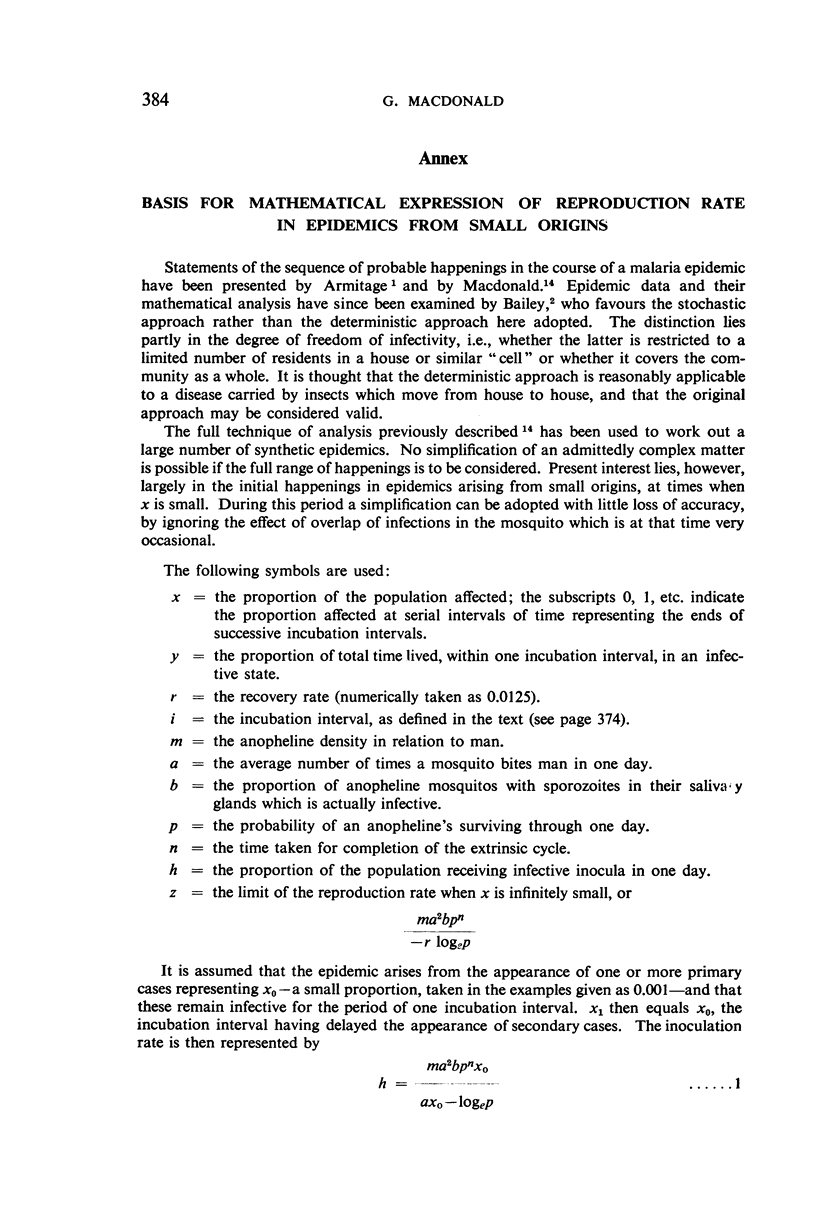

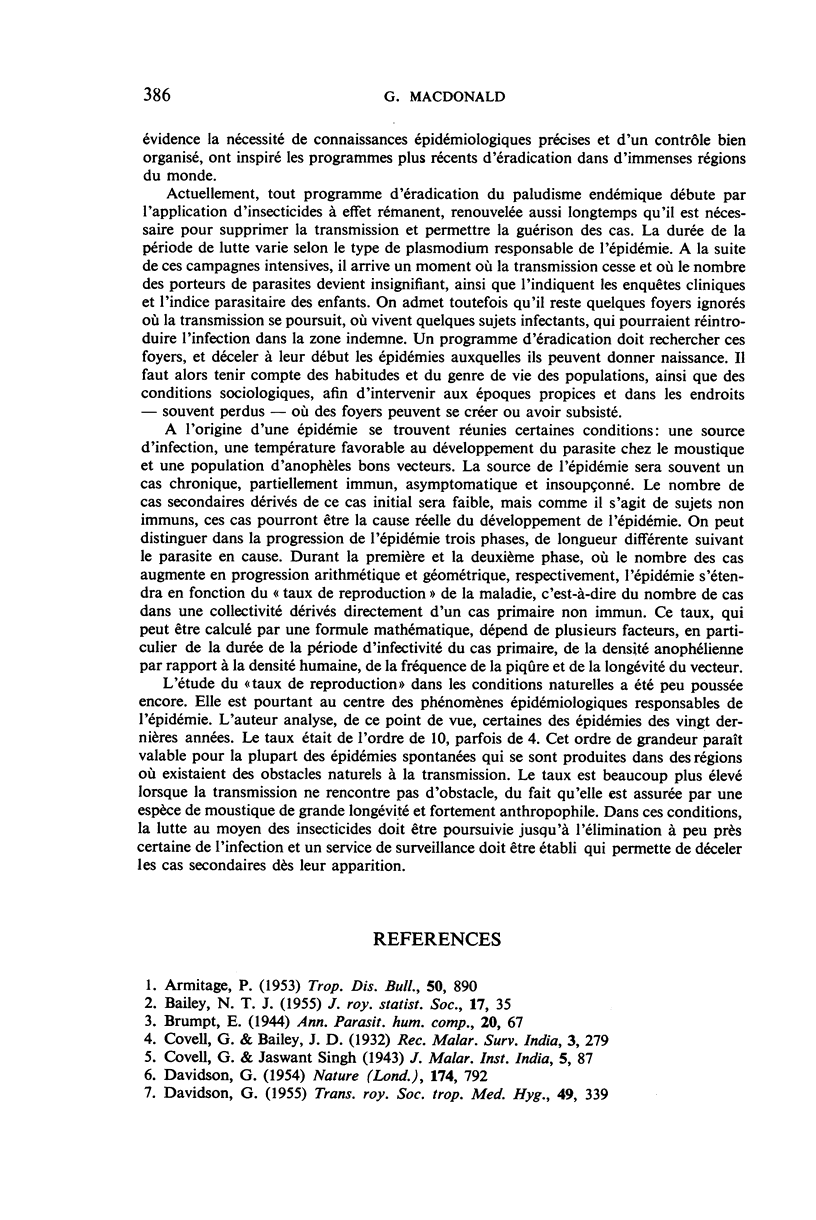
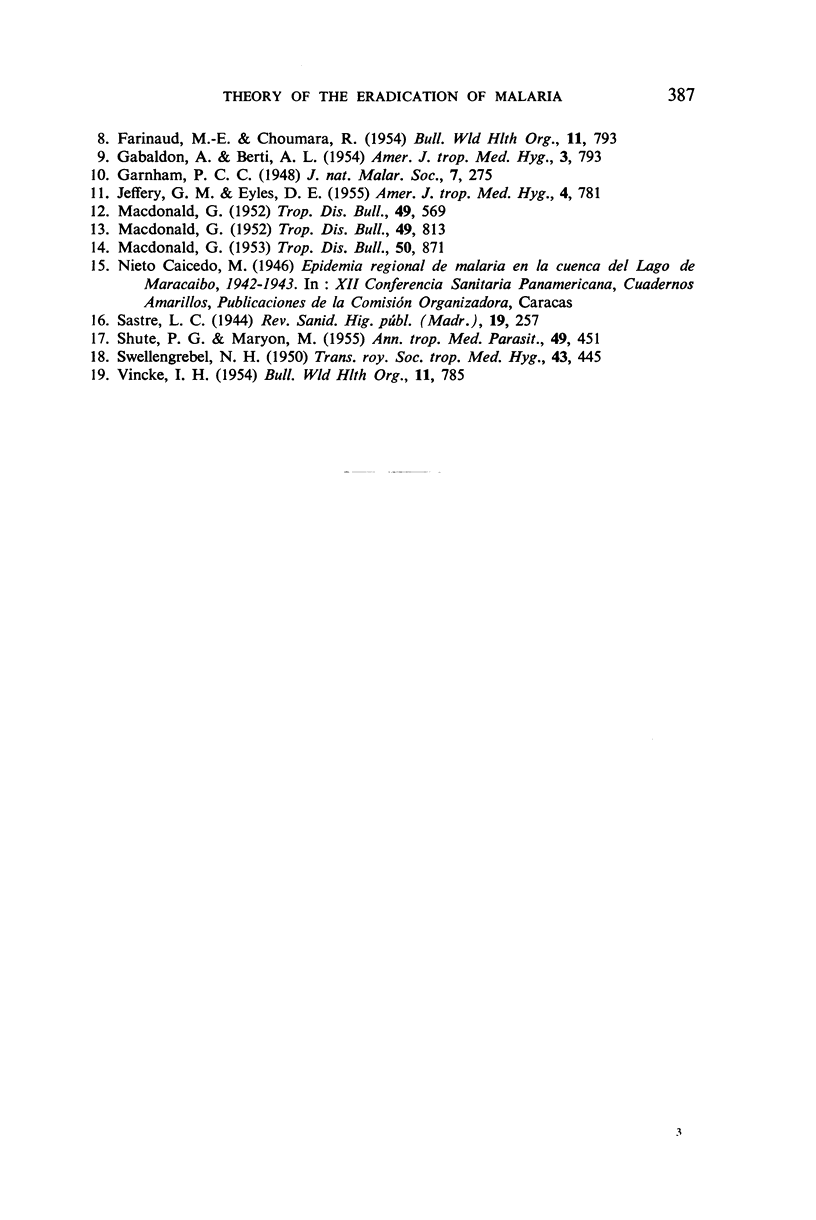
Selected References
These references are in PubMed. This may not be the complete list of references from this article.
- ARMITAGE P. A note on the epidemiology of malaria. Trop Dis Bull. 1953 Oct;50(10):890–892. [PubMed] [Google Scholar]
- DAVIDSON G. Estimation of the survivalrate of anopheline mosquitoes in nature. Nature. 1954 Oct 23;174(4434):792–793. doi: 10.1038/174792a0. [DOI] [PubMed] [Google Scholar]
- DAVIDSON G. Further studies of the basic factors concerned in the transmission of malaria. Trans R Soc Trop Med Hyg. 1955 Jul;49(4):339–350. doi: 10.1016/0035-9203(55)90056-0. [DOI] [PubMed] [Google Scholar]
- FARINAUD M. E., CHOUMARA R. La prophylaxie du paludisme dans les Pays montagnards du Sud Viet-Nam. Bull World Health Organ. 1954;11(4-5):793–838. [PMC free article] [PubMed] [Google Scholar]
- GABALDON A., BERTI A. L. The first large area in the tropical zone to report malaria eradication: North-Central Venezuela. Am J Trop Med Hyg. 1954 Sep;3(5):793–807. doi: 10.4269/ajtmh.1954.3.793. [DOI] [PubMed] [Google Scholar]
- GARNHAM P. C. C. The incidence of malaria at high altitudes. J Natl Malar Soc. 1948 Dec;7(4):275–284. [PubMed] [Google Scholar]
- JEFFERY G. M., EYLES D. E. Infectivity to mosquitoes of Plasmodium falciparum as related to gametocyte density and duration of infection. Am J Trop Med Hyg. 1955 Sep;4(5):781–789. doi: 10.4269/ajtmh.1955.4.781. [DOI] [PubMed] [Google Scholar]
- MACDONALD G. The analysis of equilibrium in malaria. Trop Dis Bull. 1952 Sep;49(9):813–829. [PubMed] [Google Scholar]
- MACDONALD G. The analysis of malaria epidemics. Trop Dis Bull. 1953 Oct;50(10):871–889. [PubMed] [Google Scholar]
- MACDONALD G. The analysis of the sporozoite rate. Trop Dis Bull. 1952 Jun;49(6):569–586. [PubMed] [Google Scholar]
- SHUTE P. G., MARYON M. Transmission of Plasmodium malariae by laboratory-bred Anopheles maculipennis var. atroparvus Meigen. Ann Trop Med Parasitol. 1955 Dec;49(4):451–454. [PubMed] [Google Scholar]
- VINCKE I. H. Prophylaxie medicamenteuse du paludisme en zone rurale. Bull World Health Organ. 1954;11(4-5):785–792. [PMC free article] [PubMed] [Google Scholar]


